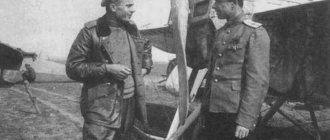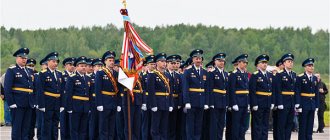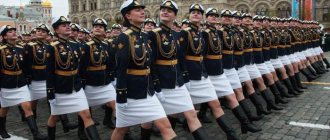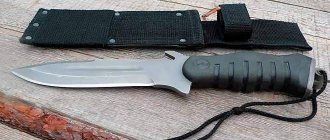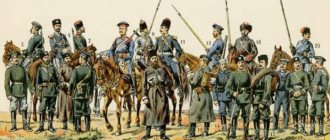Many elements of the Marine Corps uniform approved in the modern Russian army migrated from the times of the USSR, but even in those distant times, not everything was so simple. Over the entire period of its existence, the Marine Corps troops dressed in different clothes, so it is convenient to follow the transformation of uniforms in parallel with the history of the troops.
As a separate and independent branch of the military, the USSR Marine Corps was created according to the order of the commander of the Navy in 1940. Moreover, the reorganization initially took place in the rifle brigade of the Baltic Fleet.
As you know, 1941 was marked by aggression from Germany. The experience of the first battles showed that a single brigade was clearly not enough. The formation of the remaining brigades had to be carried out under difficult wartime conditions. Marine units, the analysis showed, performed key strategic actions in many significant battles.
The creation of brigades began in Leningrad and Kronstadt. There, regiments were formed from coast guard personnel, as well as warships. There were four of them in the Baltic Fleet. The total number of contingents in all fleets was more than 120,000 people, these are brigades of the Black Sea, Baltic and Northern Fleet. Also during the Second World War, a marine corps unit based in the Pacific Fleet was formed.
What colors are used in the navy?
White and blue or dark blue shades have been considered traditional for the fleet for more than a century. These are the colors of the sea, the colors of St. Andrew's flag, the only shades that can be found during a many-month voyage at sea. White is the color of sea foam, breakers, clouds and ice in the ocean, blue and indigo are the colors of the sky and sea. For practical reasons, black has also appeared in the range of colors used to create the form.
Of course, not because at night the sea also turns black, but because during the transition from sailing ships to steam ships, the need arose to work with coal, to maintain coal fireboxes, and this work also fell on the shoulders of the sailors. Dark blue and black clothes turned out to be very useful.
An interesting fact: the “striping” of the sailors who wore vests and other clothes made from a combination of white and blue is not accidental. With this choice of colors, the work of each person on deck is clearly visible, and when a person falls overboard, he can also be seen immediately. These colors create a comfortable contrast against the background of the sea and sails.
Dark shades of clothing remained relevant for everyday work, but it was necessary to choose a ceremonial color, which should look especially elegant and bright. Of all the colors relevant for naval uniforms, white turned out to be the brightest, most festive, and attractive. It is not surprising that he was chosen to create the dress uniform. A white jacket and black trousers, or a completely white uniform - this is exactly what a sailor would look like in a festive formation.
Casual uniform for officers and midshipmen
The military casual uniform, intended for officers and midshipmen, includes: a black or white woolen cap, a jacket made of the same material, a black coat, a cream shirt, a black tie with a gold bartack, a muffler, black trousers, a waist belt, gloves and ankle boots, low shoes or boots as footwear. It is also allowed to include a black cap, a woolen sweater of the same color, a demi-season jacket or raincoat and a jacket made of blue wool in the everyday set.
Navy units
Let's look at each one briefly:
- Marine Corps (we'll look at the ranks below). The branch of the military was created on February 14, 1992. It is designed for amphibious assault operations, the defense of important strategic facilities on the coast, and the protection of naval bases. The color of distinction is black (black beret), the motto is: “Where we are, there is victory!” Number: 12.5-35 thousand military personnel. Marine units are present in the Pacific, Northern, Black Sea, Baltic Fleet, and Caspian Flotilla.
- Naval aviation. Destruction of the enemy's battle fleet, as well as its landing forces, convoys, single ships both at sea and at bases, covering one's ships from air attack, aerial reconnaissance, destruction of cruise missiles, airplanes and helicopters, air transportation, landing of detachments, search and rescue work. Basing points: Pacific, Northern, Baltic, Black Sea fleet.
- Coastal defense and security. The troops protect the military bases of the Russian Navy and strategically important areas of the coastal zone. They have coastal artillery and missile systems, incl. and anti-aircraft, torpedo, mine weapons, and special coastal defense vessels.
Unique options
The exclusive demobilization uniform gives greater scope to the author's imagination. It’s much easier to go overboard here, expressing bad taste instead of originality. What can you say about her? This form of clothing is motivated to hide from the authorities. The commander is guaranteed not to understand such a flight of creative imagination.
What is she like? Firstly, it automatically includes modifications to the strict demobilization form. Secondly, it includes a number of other improvements:
- velvet-lined shoulder straps, pocket flaps, sleeves;
- replaced buttons;
- chevrons atypical for the branch of service;
- the edges of the form are trimmed with white edging;
- shoulder straps converted into epaulets;
- voluminous lining for shoulder straps;
- abundance of icons;
- aiguillettes.
Varieties
The main division of uniforms is casual and dress. Each rank has its own specially designed clothing, which is divided into summer and winter versions. Winter options replace light clothing in everyday uniforms with insulated ones, adding outerwear and warm sweaters.
Everyday (for sailors, cadets, soldiers):
Shirt. White, free. The back and front parts are one. The sleeves are straight. Collar. Light blue with light lines. Fastens to a shirt. Trousers. Dark, have a loose fit, a pigskin belt with a plaque. Headdress. Most often - a rectangular cap with a cockade, less often - a cap (light or dark). Sewn from wool. Shoes. Thick sole. Instead of laces, there are special inserts - elastic bands. Boots, low shoes, ankle boots. Pea coat, coat or overcoat. Vest. Warm hat with earflaps. Gloves.
Dress uniform (for sailors, cadets, soldiers) of the Russian Navy:
- Vest. Contract soldiers wear a cream-colored shirt.
- The trousers are deep charcoal. They have a loose fit and a pigskin belt with a buckle.
- Peakless cap, hat with earflaps. The hat is chosen according to the weather.
- Uniform (regular naval dress, sailor's shirt), jacket, flannel jacket.
- Low shoes, boots, ankle boots.
- The coat is dark wool.
- Muffler (scarf).
- Gloves.
The dress uniform changes depending on the weather and time of year and has many variations. Office workwear is less strict, but requires wearing a certain combination of shades and certain things. Everyday uniform (officers, midshipmen) of the Russian Navy:
- The shirt is cream.
- Dark trousers with a belt.
- Thin black tie.
- Muffler.
- Gloves.
- Wool cap, cap (black only).
- Jacket. Warm dark jacket with two sides, wool sweater.
- Coat, jacket, jacket, raincoat in dark shades.
- Low boots, low shoes, boots.
Front door (officers, midshipmen):
The shirt is snow-white. Trousers with a belt. A thin black tie with a gold clip. Golden belt over all clothes. Wool cap. Black wool jacket. In summer, light is used. A coat on which shoulder straps, a raincoat, a jacket are sewn. Muffler (scarf). Gloves (may be white). Low boots, low shoes, boots (the shade matches the gloves).
Casual Navy Uniform for Women:
- Cream blouse.
- Black thin tie and gold hairpin.
- Muffler.
- Black skirt and belt with badge.
- Beige tights (nude).
- Coat, raincoat.
- Sweater.
- Black shoes, boots, shoes.
- Black cap, beret, hat with earflaps.
Navy ceremonial clothing for women:
- Dress jacket.
- Dark thin tie and golden hair clip.
- Golden belt.
- Kashne (warm snow-white).
- Black skirt and belt with badge.
- Beige tights (nude).
- Coat, raincoat.
- Dark charcoal boots, boots, shoes.
- Dark beret, hat with earflaps
Navy office military uniform The office uniform set is slightly different from the everyday Navy uniform and includes:
- Jacket.
- Trousers.
- Cap (blue or black). Rarely, a white cap may be used.
- Vest. It can be replaced with a T-shirt (white or blue).
Are you interested in knowing what the requirements are for special clothing for ambulance workers? Read about this in a separate article. If you would like to know what the new Airborne Forces uniform looks like, look here.
Dress uniform. Description
The dress uniform has several options. This is due to different weather conditions. A white shirt, black wool trousers and a gold belt are the main components of the dress uniform.
As for shoes, the Navy dress uniform may have black or white boots. It is also allowed to wear ankle boots or boots in two colors. Depending on weather conditions, a muffler or collar is permitted.
During the cold season, the dress uniform includes a black wool coat. Overhead shoulder straps are sewn on top of it; they are exactly the same as those used on jackets. The shoulder straps on the shirts are removable. The winter version of the dress uniform includes wearing black gloves. If the weather conditions are not too harsh, then military personnel can use a raincoat or a demi-season jacket. In addition to black gloves, military personnel can also wear white ones.
Story
The first legendary fleet, numbering over 1000 ships, was assembled in the Boeotian harbor of Aulis by the Achaeans under the leadership of Agamemnon during the Trojan War. In the 5th century BC. e. The ancient Roman fleet began to form. At the beginning of the Middle Ages, the Byzantine fleet appears, and at the end it is replaced by the Ottoman fleet.
In 1588, the Invincible Armada was created in Spain, which was supposed to provide a naval landing to England, but the Spanish fleet (130 ships) was defeated by the British fleet (227 ships) in the Battle of Gravelines. From this moment on, the Thallasocracy of Great Britain begins. Various countries tried to challenge her power over the seas. A squadron of the French fleet (40 ships) was defeated by Vice Admiral Nelson's British squadron (33 ships) at the Battle of Trafalgar in 1805. And in 1827, the combined British-Russian-French squadron under the command of Vice Admiral Codrington (27 ships) defeated the Ottoman fleet (88 ships) in the Battle of Navarino.
During the First World War, Germany tried to challenge hegemony for world domination and in 1916 the grandiose Battle of Jutland took place with an uncertain outcome, where the German fleet of Admiral Scheer (99 ships) fought with the British fleet of Admiral Jellicoe (151 ships).
After World War II, the fleets received further development. They received new powerful means of combat. The organizational structure was improved, firepower, striking force, mobility, and the ability to perform tasks in the face of the enemy’s use of both conventional weapons and weapons of mass destruction increased.
Russia
Guys of the Russian Empire Navy
Stern flag of the Russian Empire Navy
USSR Navy flag
The Russian Navy is a branch of the armed forces that has an enormous history of creation and development, organizationally consisting of military command bodies (order, admiralty, general staff, ministry) and types of forces: surface, submarine, naval aviation, coastal artillery (coastal missile and artillery troops) and marines. It also includes auxiliary fleet vessels, special forces units (special forces) and various support services. In addition, the Navy has logistics (supply) units and institutions. Designed to protect the country from the enemy from sea directions.
At various periods in the history of Russia, its fleet bore the names:
- Russian Imperial Navy;
- Workers' and Peasants' Red Fleet (RKKF);
- USSR Navy (USSR Navy);
- Navy of the Russian Federation (Russian Navy).
Navy Day was celebrated in the USSR on the last Sunday of July. In the Armed Forces of the Russian Federation, the memorable Navy Day is celebrated on the same date.
Historical:
Army fleet (rowing)
During the imperial period, the following fleets existed in Russia:
- Azov Fleet;
- Baltic Fleet of the Russian Empire;
- Black Sea Fleet of the Russian Empire;
- Pacific Fleet of the Russian Empire.
During the Soviet period:
- Baltic Fleet of the USSR Navy;
- Northern Fleet of the USSR Navy;
- Pacific Fleet of the USSR Navy;
- Black Sea Fleet of the USSR Navy (see also Black Sea Fleet during the Great Patriotic War);
- Caspian Flotilla of the USSR Navy.
In the modern period there are:
- Baltic Fleet of the Russian Navy;
- Northern Fleet of the Russian Navy;
- Pacific Fleet of the Russian Navy;
- Black Sea Fleet of the Russian Navy;
- Caspian Flotilla of the Russian Navy.
USA
US Navy Flag
Main article: United States Navy
The US Navy includes such administrative and strategic units as the US Pacific Fleet, which forms operational fleets with odd numbers, and the US Fleet Forces Command (formerly the US Atlantic Fleet), which forms operational fleets with even numbers.
List of active American operational fleets:
- US Navy Third Fleet;
- US Navy Fourth Fleet;
- US Navy Fifth Fleet;
- US Navy Sixth Fleet;
- US Navy Seventh Fleet.
Historical:
- US Navy First Fleet;
- US Navy Second Fleet;
- Great White Fleet;
- US Navy Eighth Fleet;
- US Navy Tenth Fleet;
- US Navy Twelfth Fleet;
- US Asian Fleet.
Ministry of Internal Affairs and Internal Troops
The demobilization uniform of the Internal Troops of the Ministry of Internal Affairs differs from the military one, perhaps, only in the color of the camouflage - “numbers”. Grayish colors predominate (after all, they belong to the Ministry of Internal Affairs). Another traditional color typical of the special forces of the Ministry of Internal Affairs is maroon. Representatives of the special forces units of the Ministry of Internal Affairs are especially proud of their maroon beret. Military personnel receive it only after successfully completing quite complex qualification tests, including tough and uncompromising contact hand-to-hand combat.
For demobilization of internal troops, everything is much simpler; you just need to purchase the above-mentioned beret. After all, they have long chosen both the maroon velvet shoulder straps and the maroon velvet linings on their pockets.
The demobilization form of the Ministry of Internal Affairs (the department is the same) is similar to the Internal Troops form. But the berets here are not maroon, but intense black.
To conclude the presentation of the material in this article, let us dwell on a small detail of demobilization clothing - the collar, which soldiers also succinctly call “hemming.” It is sewn on the inside of the collar for hygiene purposes. The unwritten regulation establishes the differences between the Dukhovsky collar - “herring” - and the demobilization collar: multi-layered, with a piping sewn inside to maintain a smooth volumetric contour of the upper part of the hem. Some creative demobilizers equip the collar with informative “DMB” embroidery.
Shoes and hats
The Russian Navy uniform includes several headdresses. This could be a cap without a trump card with ribbons on which the name of the ship is indicated, or a simple inscription: “Navy.” On the crown of the cap there is a cockade in the form of a golden anchor. During the Soviet Union, the cockade was made in the shape of a crab - a red star framed by gold leaves. The summer cap is made of white fabric and always comes with a spare cover. In winter, Navy sailors wear hats with ear flaps made of black fur. What does the winter uniform of the Navy look like nowadays? The photo below shows her appearance.
The set includes hats and a cap. There is a cockade on the front and three blocks for ventilation on the sides. In Soviet times, black caps varied in type - especially for officers and privates. Today, caps are worn by everyone, and the semicircular style has been changed to rectangular. Sailors' boots have an interesting name - burnouts. They are made of yuft leather, have a thick sole, and rubber inserts are also added to the laces. Chrome boots are considered dress shoes.
Next global change
A special legislative document dating back to 1963 approved a new procedure regulating the list of elements of uniform for the MP and, accordingly, the amphibious assault. By the same decree, the old uniform was abolished. The combat uniform, like the field version, was considered simplified. For frequent or even daily use, officers were required to wear clothes made of wool blend material, and sergeants and sailors were required to wear some elements made of cotton fabric.
The beret , like a headdress , was the same black color, but the material was different. Officers wore a woolen beret , sergeants were entitled to both woolen and brushed ones, and sailors only wore brushed cotton ones. Externally, the woolen one had a difference in the form of a leatherette side. The brushed beret is equipped with a fabric side. The beret differed from the modern one in that instead of a red pennant, a star was attached to it. A vest was worn under a black jacket .
The patch on the left, made on the sleeve, is still considered one of the symbols of the MP. It was chevron , on which a yellow anchor was inscribed in a burgundy-colored circle. If we start talking about shoes, then everything is clear here: for officers and ordinary ordinary sailors, the only option was yuft boots with a shortened top. Only officer boots had leather soles, while the rest had rubber soles.
Marine Corps in Chechnya
Marine units during the Chechen campaigns, thanks to their fearless actions, earned honor and recognition among the entire military community.
The Chechen war became a great test for young Russian soldiers. The Chechen fighters had significant combat training, knew the terrain very well, and had many informants among the local population.
Therefore, fighters with special professional combat training were urgently needed. Throughout the Chechen conflicts, Russian marines did not give up their positions, did not give up even in the event of mortal danger. The fallen soldiers remained forever in the memory of their relatives and fellow soldiers.
Marine reconnaissance officers are improving their mountain training to participate in combat operations in the mountains
In the most difficult combat situations, Marines found themselves at the center of events. When in 1995 in Grozny, terrorists turned the city into an impregnable fortress and battles were fought for every block, for every entrance, the Marines also showed their steadfastness and courage, and it was the Marines who hoisted the St. Andrew’s flag on the palace. The remaining film footage from that assault shows those terrible events and the participation of the Marines in them.
Briefly about the winter version
The winter demobilization uniform additionally includes an overcoat modified with a wire comb to the state of a fur coat, judging by the length and density of the pile. It is also advisable to add an officer’s hat, scarf and leather gloves to it. Similar clothing is described in Yu. Polyakov’s story “One Hundred Days Before Dembilization.”
Let us note that such an exclusive should not be undertaken without proper taste and modesty. Everything is good in moderation. It’s bad if people start making fun of a soldier who served his Motherland with dignity. After all, as you know, people greet you by their clothes...
Navy demobilization uniform
Changes in military legislation that took place in 2007 reduced the period of conscription military service from two years to one year. This was done due to the need to combat hazing (“hazing”) and the transition to a contract basis.
According to the old unspoken rules, a soldier who served for up to 6 months was considered a newcomer and had no rights, and was obliged to follow the orders of the senior conscript.
After serving for 6 months, a soldier becomes a scoop, and the scope of rights increased due to the arrival of young recruits. Next came the “elephant” (from a year to a year and a half) and the one who had a hundred days left to serve was considered a “demob.”
In this regard, the preparation of the demobilization uniform of the Navy began precisely at this time with the help of the most competent and hard-working soldiers of the junior conscription. The uniform was sewn to fit the figure, new chevrons and stripes were sewn onto the sleeves, preferably with solid inscriptions (Special Forces, Special Force, etc.). An aiguillette must be sewn on, and the shoulder straps had to be white and gold and, of course, with an anchor.
The collar of the jacket was trimmed in the manner of an admiral's with white threads, and plastic inserts were installed in the breast pockets. They did not forget about the badges received or purchased during the service. Usually these were insignia, commemorative medals, a “Warrior-Athlete” badge, etc.
Demobilization uniform of the Russian Navy (photo)
Nowadays, a soldier does not have time to forget civilian life. Learn military science from the officers and is already ordering a uniform for demobilization. Sometimes there are such carnival costumes.
What should be observed in demobilization clothing?
We also note that demobilization forms are not completely impromptu. After all, it is, after all, done by the “grandfather” (a conscript soldier who served for a year and a half). Oddly enough, when creating them, several rules must be followed:
- insignia are placed in accordance with the canons approved by the statutes;
- the creator of an exclusive form must observe moderation and taste when decorating it.
It is curious that maintaining the above-mentioned tradition was not always observed by military personnel.
Features of the everyday kit
For officers and soldiers of the Russian army, Order No. 300 of the Ministry of Defense has been communicated, which outlines the rules for wearing the uniform and its equipment for various types of troops. Interestingly, in everyday equipment there is no difference between a private and an officer.
Summer version of the form
Field clothing option 1 includes:
- cap;
- jacket with trousers;
- shirt with black tie;
- belt;
- low shoes or ankle boots, boots.
The shirt can be replaced with a T-shirt. The underwear is lightweight and made of jersey. Its special features are excellent air exchange, moisture absorption, and quick drying. In some branches of the military, the cap has been replaced by berets and hats.
The entire set is highly hygienic and comfortable for daily wear. The fabric of the light jacket is treated with special water-repellent agents. If caught in the rain, a soldier will not get wet for 2 hours. The density of the material has been increased in the area of the elbows, knees, and seat.
Multilayer kit
When the air temperature drops in the fall, a winter version of the uniform is issued. It consists of several layers. As it gets colder, lightweight underwear is replaced with fleece. When the temperature drops sharply, you should wear both sets of underwear with a lightweight fleece one.
For those who serve in special forces, airborne troops, instead of body sweatshirts, they are issued vests with blue or light blue stripes on white. The 3rd layer of winter uniform is intended for autumn weather, when the air does not warm up to 15 degrees Celsius. Layer 4, consisting of a windbreaker jacket, will save you from autumn slush and rain.
The main suit is layer 5, which is comfortable to wear in the cold pre-winter months. A suit is also provided for the serviceman that protects from wind and precipitation. An insulated cap protects your head from bad weather. In more severe conditions, a hat with earflaps is issued.
In extremely low temperatures, a recruit will stay warm under an insulated vest. The set of the insulated suit includes mittens and gloves. In addition to a fur hat, the head is protected by a helmet-mask or balaclava. Foot wraps have been abolished in the Russian army, replaced by socks. For officers, a raincoat is included in the uniform. The hats worn by privates and officers in winter differ.
Uniform of female military personnel
Everyday uniforms for female military personnel differ from male uniforms. In the summer version for women they offer:
- caps;
- jacket with wool skirt;
- blouse with tie;
- shoes or boots.
In summer, women wear trousers with a jacket, under which there should be a T-shirt. In winter, female military personnel are also given several layers of clothing. The choice is made between a skirt and trousers. It depends on the job duties that require the appropriate equipment.
Marine clothing
Initially, there was no strict regulation in terms of soldiers' clothing. The fact that the new type of troops was grouped from sailors and ground troops was also reflected in the external attire. Thus, the first Marines wore a free uniform with elements of a naval or land uniform. Often there was a vest under the tunic, and a peakless cap was used as a headdress.
For the first time in 1944, such a concept as a single uniform of the Marine Corps appeared. It was from this period that military clothing was divided into dress and field clothing, and it should also be emphasized that there was a third type - casual. The officer's uniform and the appearance of a private were different from each other.
- For officer ranks, the field cap consisted of a protective (green, khaki) cap. In winter it was replaced by a gray hat with earflaps.
- The next element is a double-breasted cloth overcoat, also gray.
- The jacket was considered all-season and had a green tint (khaki). The officer's trousers are also the same color.
- The shoes for all representatives of the Marine Corps were yuft boots.
For military personnel up to and including the rank of sergeant, they were required to wear a peakless cap, which was replaced by a hat with earflaps in the winter. The gray cloth overcoat was practically no different from the officer's. A vest was worn under a khaki shirt. The list of clothes was completed with trousers and yuft boots. An insignia also appeared; it was presented in the form of an anchor and was placed on the left sleeve.
In August 1945, certain units of the MP took part in the Manchurian operation. The fully equipped paratrooper was dressed in a Red Army field uniform. Belonging to a particular branch of the military was determined by the vest and cap. The uniform and equipment included a waist belt with an army badge, a machine gun belt, a DP machine gun and a holster with a revolver.

